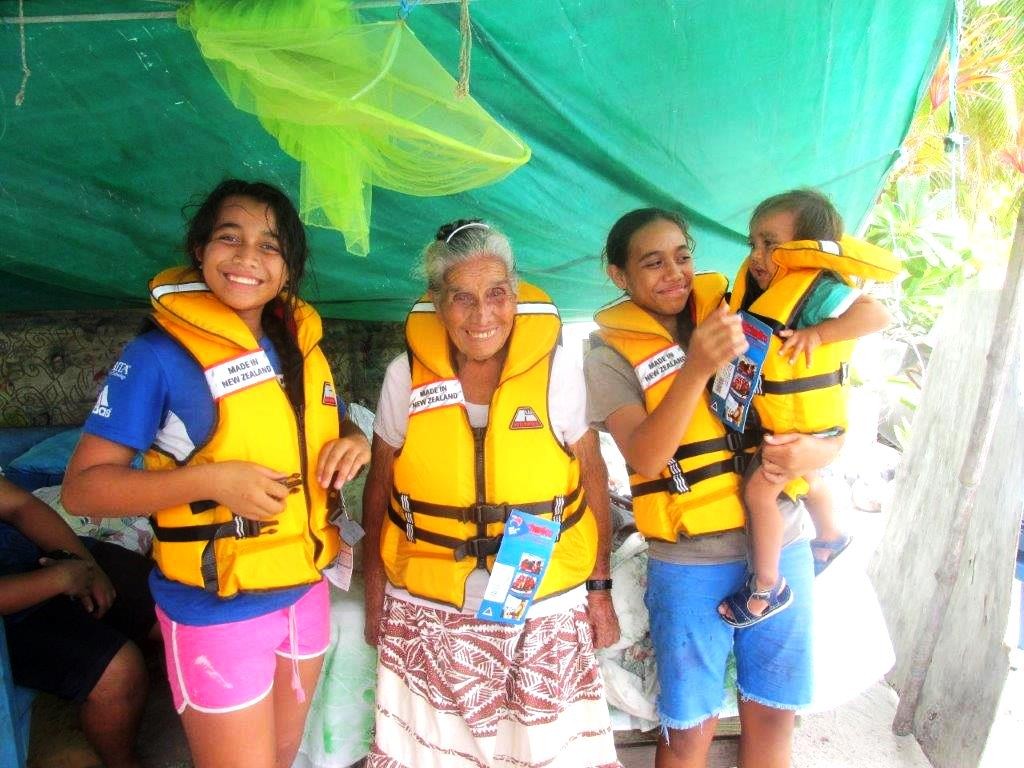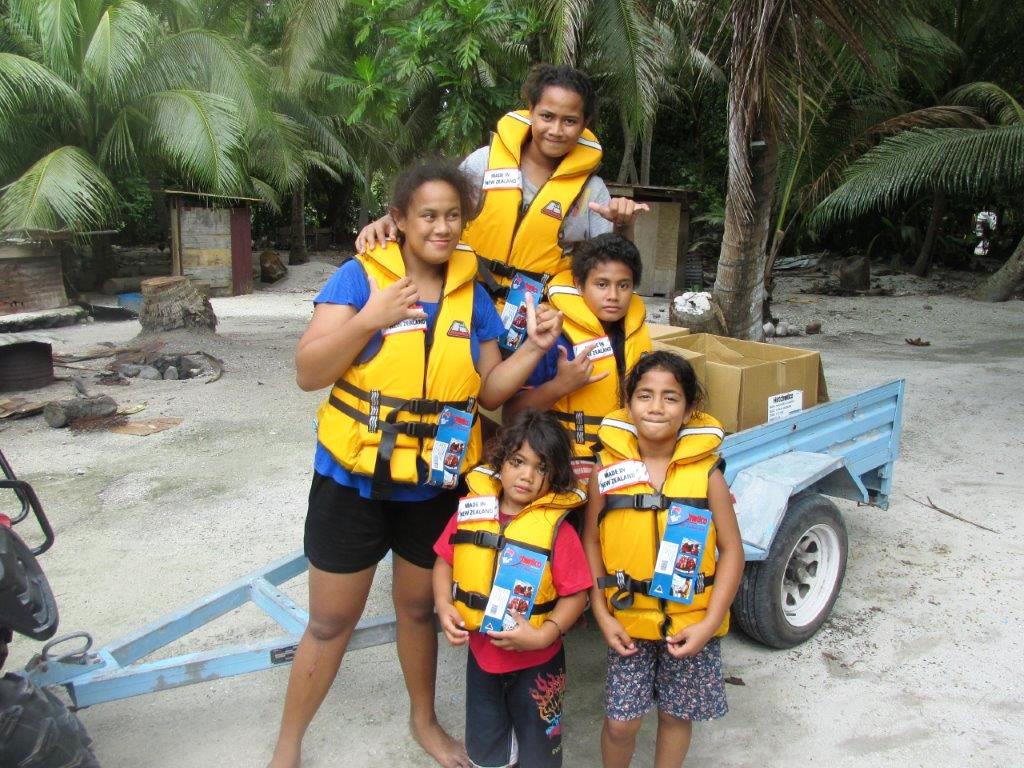Beneficiary Stories
Cook Islands: Life Jackets in Paradise
By Climate Change Cook Islands
The 70 residents of the stunning atoll of Palmerston Island in the Cook Islands urgently identified the need for life jackets to protect the community from the increased intensity and frequency of king tides, tidal surges and natural disasters due to climate change.
With no airport and limited visiting cargo ships, the isolated paradise of Palmerston Island comes at a price due to its location. The passage to access ships for the much-needed supplies, for example, is treacherous. Despite these challenges, the community has managed to live on the island it calls home for more than 150 years. Yet climate change has made the dangerous passage even more life-threatening, even to those who have spent their lives mastering its tides and currents.
More frequent natural disasters due to climate change have forced inhabitants of Palmerston to improvise. They climb trees, and tie themselves to its trunks. They also lash their boats from the lagoon to trees to keep them safe. But these are dangerous, short-term solutions that also do nothing to protect their livelihoods.

Distributing Life Jackets on Palmerston Island in November 2016.
With financial support from the Adaptation Fund, Climate Change Cook Islands — a division within the Office of the Prime Minister and supported by the UN Development Programme — has been working to address these challenges. The Strengthening the Resilience of the Cook Islands to Climate Change Programme (SRIC-CC) works with more than 200 individuals on community-based resilience initiatives to enhance water and food security across the 11 Pa Enua (outer islands) of the Cook Islands.
The SRIC-CC Programme and communities in the Pa Enua address environmental risks through community-based approaches and community-driven adaptation. In Palmerston, for example, people quickly identified the need for life jackets for all residents. In addition to making residents feel less vulnerable on the water, the project is also strengthening livelihoods. In so doing, it is helping protect a way of life on a small island paradise.


